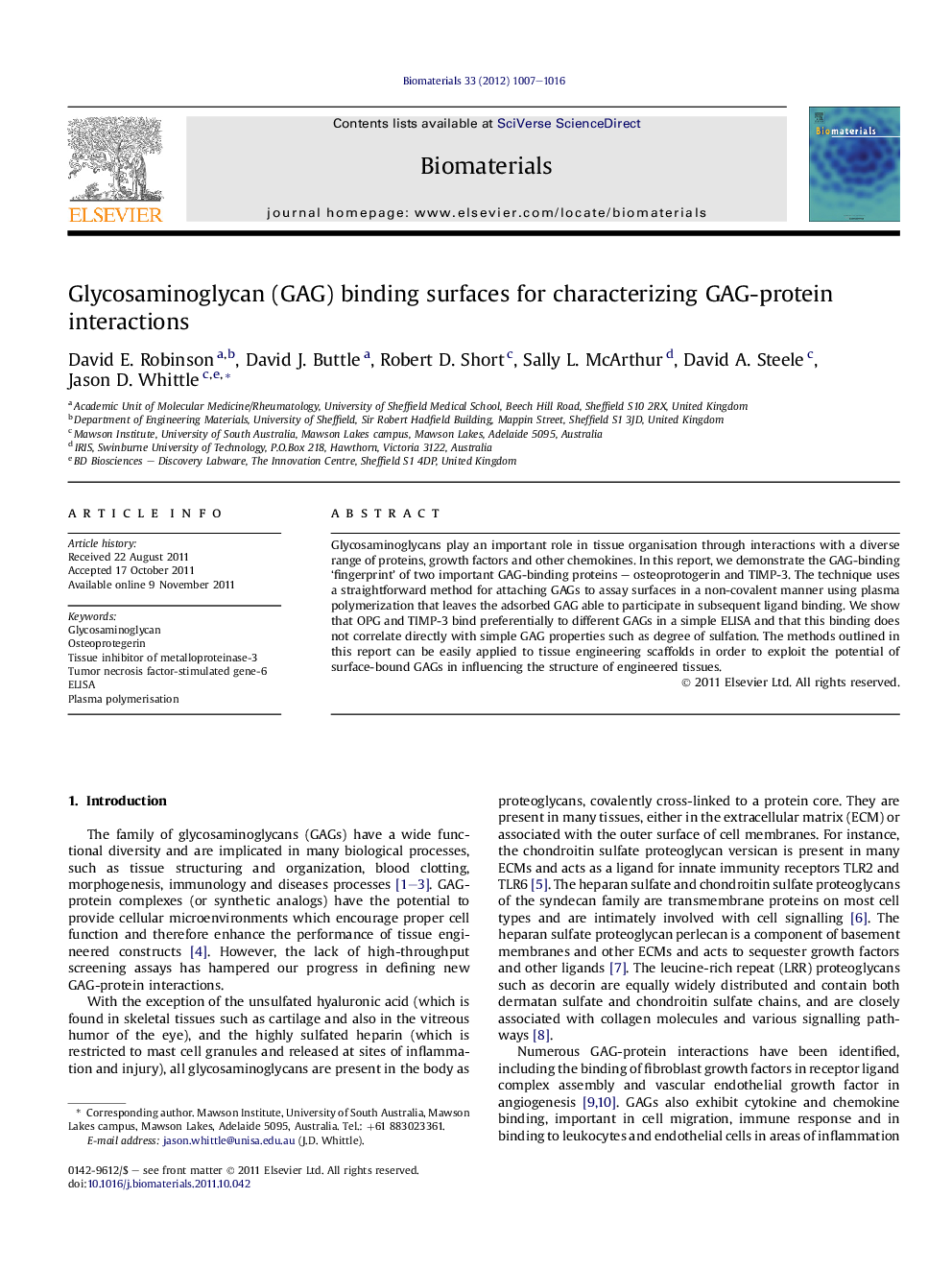| Article ID | Journal | Published Year | Pages | File Type |
|---|---|---|---|---|
| 10229413 | Biomaterials | 2012 | 10 Pages |
Abstract
Glycosaminoglycans play an important role in tissue organisation through interactions with a diverse range of proteins, growth factors and other chemokines. In this report, we demonstrate the GAG-binding 'fingerprint' of two important GAG-binding proteins - osteoprotogerin and TIMP-3. The technique uses a straightforward method for attaching GAGs to assay surfaces in a non-covalent manner using plasma polymerization that leaves the adsorbed GAG able to participate in subsequent ligand binding. We show that OPG and TIMP-3 bind preferentially to different GAGs in a simple ELISA and that this binding does not correlate directly with simple GAG properties such as degree of sulfation. The methods outlined in this report can be easily applied to tissue engineering scaffolds in order to exploit the potential of surface-bound GAGs in influencing the structure of engineered tissues.
Keywords
Related Topics
Physical Sciences and Engineering
Chemical Engineering
Bioengineering
Authors
David E. Robinson, David J. Buttle, Robert D. Short, Sally L. McArthur, David A. Steele, Jason D. Whittle,
